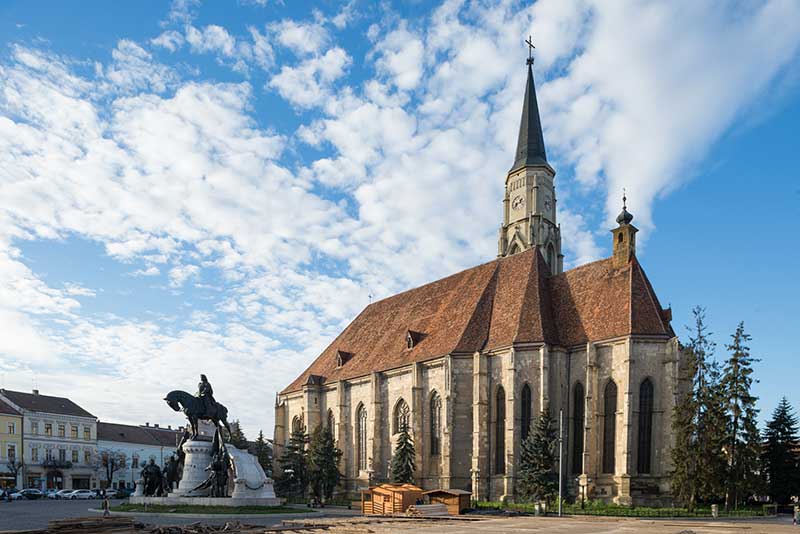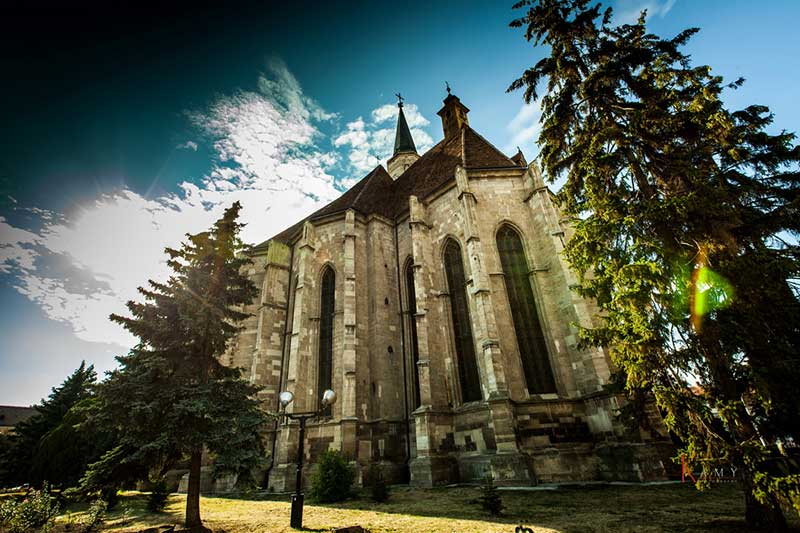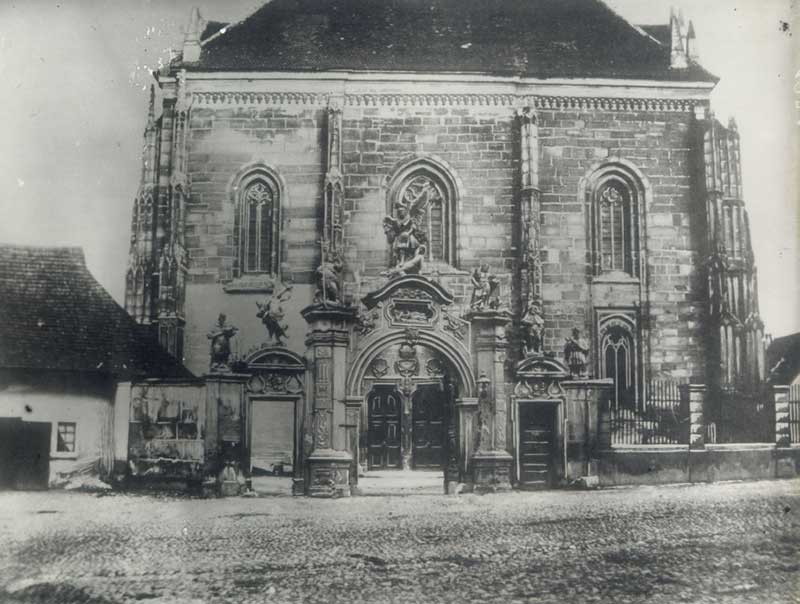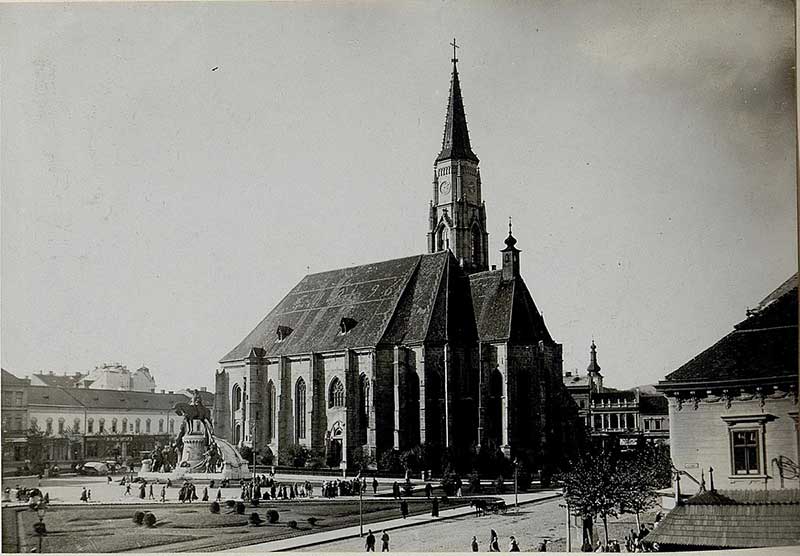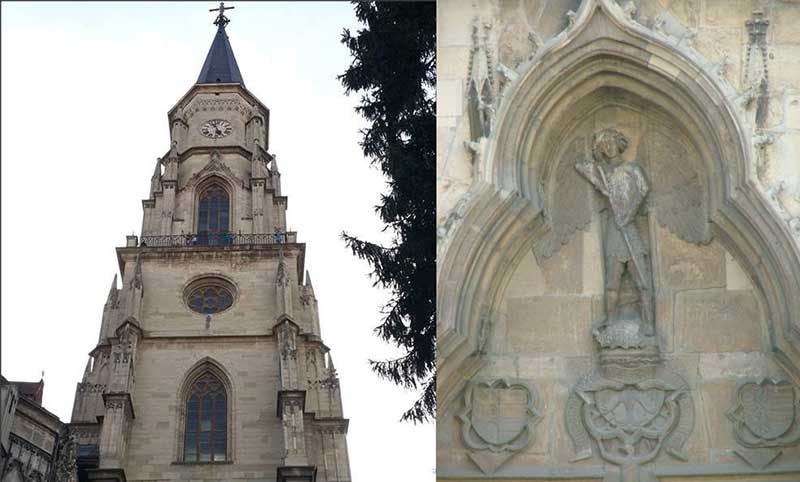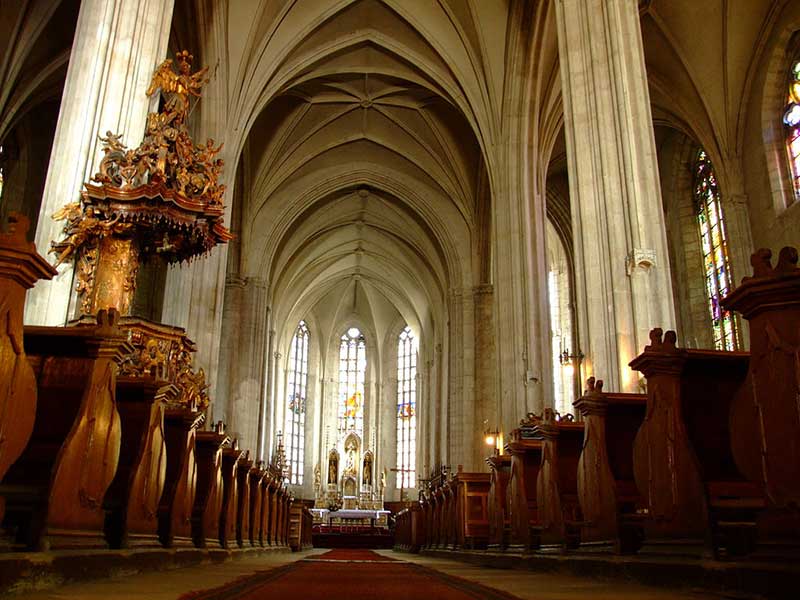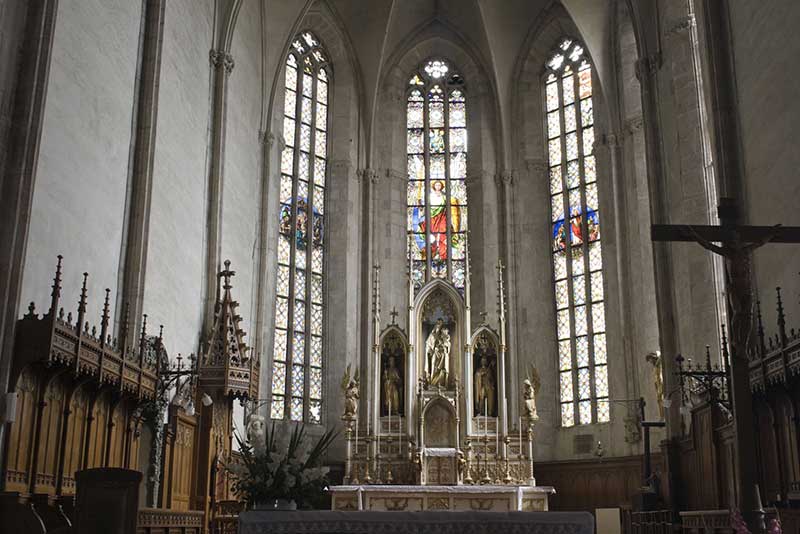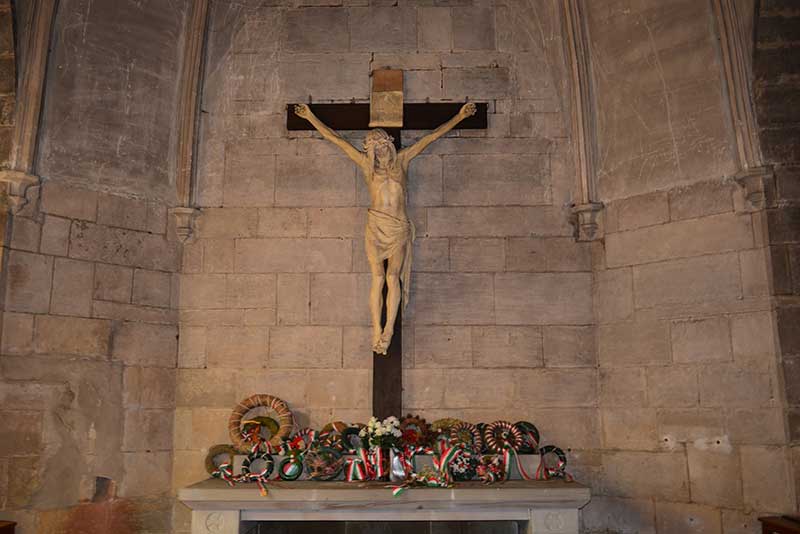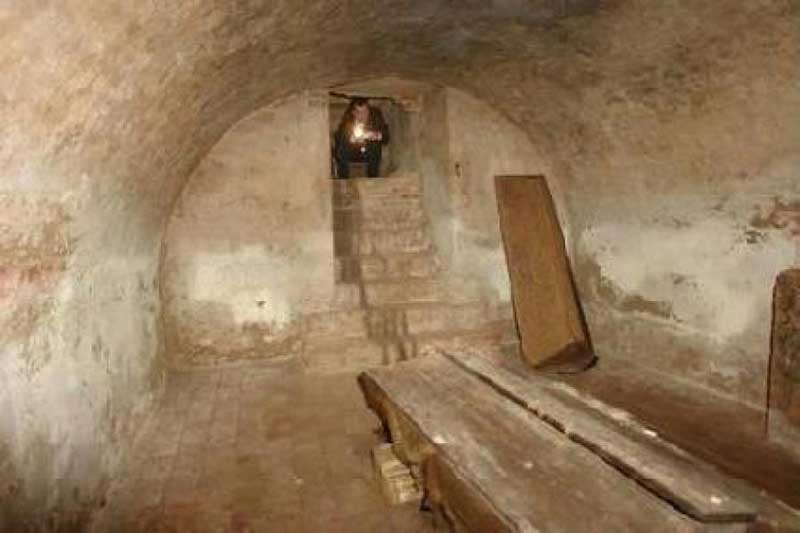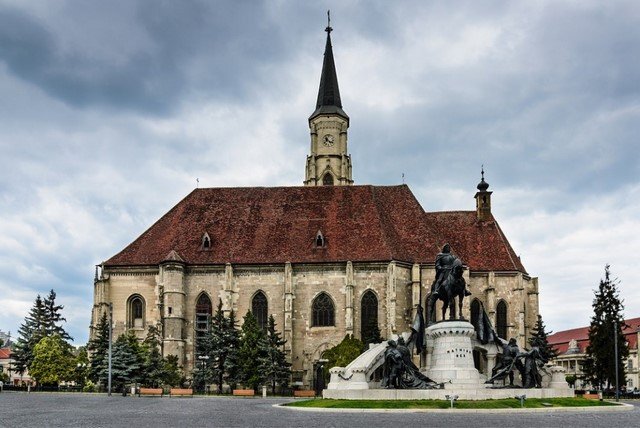St. Michael’s Church Cluj – Summary
The Church of Saint Michael (Biserica Sfântul Mihail) is a 14th-century Gothic architectural style Roman Catholic Church located in the city of Cluj-Napoca, Romania. The church sits on the ground that in previous times belonged to the Saint Jacob Chapel and a cemetery. The building is designated a national monument of Romania.
The decision to build the church was made in the month of August in the year 1316. The decision came days after the King of Hungary, Charles I (Carol Robert de Anjou), issued an act that recognized Cluj as an official city, and granted its citizens the freedom to be able to choose their religious parish and priests for their church’s leadership.
Funding for the church primarily came from the citizens of Cluj. The locals were told that donating money for the creation of the church would serve as an indulgence. An indulgence is a way to decrease the punishment one has to undertake for their sins. There is documentation dating back to 1349, which is signed by the archbishop of Avignon, France, along with 15 other bishops, that grants indulgences for the furnishing and illuminating of the St. Michael’s Church.
The church is famous for being the location where the King of Hungary and Croatia from 1458 to 1490, Matthias Corvinus (Matthias I), was baptized. King Matthias was born in Cluj-Napoca on February 23, 1443. He was baptized on the ground floor of the church’s, now mainly demolished, Schleunig chapel. Matthias went on to become considered the most powerful King to rule Hungary.
The St. Michael’s Church is the second largest church in all of Romania (being surpassed only by the Black Church of Brașov). The church’s nave measures an astounding 50×24 m, and its apse a 20×10 m. It is a daunting site and has an imposing presence in the center of the city of Cluj.
St. Michael’s Church Cluj – Table of Contents
- St. Michael’s Church Cluj – History
- St. Michael’s Church Cluj – Architecture
- St. Michael’s Church Cluj – Mystery
- St. Michael’s Church Cluj – Present Day
- St. Michael’s Church Cluj – Video
- St. Michael’s Church Cluj – Visitor Info
St. Michael’s Church Cluj – History
The St. Michael’s Church in Cluj has been the holly gathering sanctuary for a variety of different sects throughout its long history. For the first two centuries following the church’s inception, the church belonged to the Catholic faith. During the years of 1545 to 1558, the church was of the Lutheran denomination. From 1558 to 1566, the church became a Calvinist worship facility. In the years, 1566 to 1706, the church once again became home to a different affiliation, this time Unitarian.
While under the Unitarian leadership, the St. Michael’s Church served as the center, and most important site, for the Unitarian religion in all of Europe. In 1570, the Unitarian bishop of Cluj, Francisc David, prophesied that the coming of Jesus would take place in the city of Cluj. After his prophecy became unfulfilled many Unitarian adherents were left disappointed and dissatisfied in the bishop.
In the year 1699, the Habsburgs took occupation of Transylvania. During their occupation, they gained control of all the places of worship in Cluj and surrounding areas. They converted the Church of St. Michael’s (along with many other churches in the region) back to the church’s original, and the empire’s primary religion, of Catholicism. The St. Michael’s Church is Romania’s only church to have served 4 different religions.
For half a century, the St. Michael’s Church was also a primary meeting location for the Transylvanian Diet. The Transylvanian Diet was a group of noblemen that compromised a legislative, administrative and judicial body, which operated in the region from 1570 and 1867. The Diet made numerous important political decisions at meetings within the church’s walls. One of the more significant decisions made by the Diet inside the church was the 1954 decision for Transylvania to enter the Holy League war against the Turks.
St. Michael’s Church Cluj – Architecture
The St. Michael’s Church of Cluj was constructed in two separate phases. The first phase took an outstanding 74 years of development before it was finished, from 1316 to 1390. The second phase of construction took a meager, in comparison, 5 years before it was completed, from 1442 to 1447. Throughout the decades of its standing, the church has undergone many changes, modifications, and additions.
Perhaps the biggest change the church has undergone from its original version is that of completely replacing its initial tower. The first tower, which was erected in 1545, became the victim of a string of bad luck. Not long after it was erected, it became engulfed in, and severely damaged, by a fire. Greatly weakened from the fire, the tower was later completely finished off and destroyed by an earthquake.
In 1862, a Gothic Revival (Neo-Gothic) style, 80-meter-high (including the cross), clock tower was erected to replace the original one which was lost. The clock tower, which still stands today, is also the church’s most recent construction and is considered to be the highest tower in all of Transylvania. The church contains 4 gates. Above the main entrance of the west gate, there is a decoration of the three coats of arms from the reign of the Holy Roman Emperor, King Sigismund. The inscriptions, which date back to 1419, consist of the coats of the Roman-German Empire, the Hungarian Empire, and the Czech Empire.
The church walls are aligned with alluring stained-glass windows that illuminate the inside with many vibrant colors. The grand door frame to the sacristy was marvelously sculpted from stone in 1528 at the commission of the then parish priest Johannes Klein. There are various statues and reliefs spread throughout the church, their semblance represents the different religions that ruled the church during the time they were erected.
St. Michael’s Church Cluj – Interior
The St. Michael’s Church’s original 1753 organ, created by the Sibiu master crafter Johannes Hahn, is still located within the church. Although it is still considered the “original” (because it was never replaced completely) the majority of it has been reconstructed throughout the years. The most significant changes and upgrades to the organ were done in 1990 by the organ restoration specialist Herman Binder.
The Church of St. Michael’s oldest known section is that of its alter. The Gothic style alter was created by the local carpenter, Lajos Back, and inaugurated in 1390. It contains very detailed and amazing carvings of the Virgin Mary, St. Ladislau, and St. Stephen. It is one of two alters which remain inside the church from the 11 other (6 Gothic, 5 baroque) church alters which have come and gone.
The Church’s Chapel is dedicated to the Archangel Michael and is located beneath the church’s clock tower. Inside the chapel, there is a magnificent crucifix which was created by the extremely talented sculptor Fadrusz Janos. Also found inside the chapel are the church’s best preserved, very artful, and extraordinarily beautiful frescoes.
Between the northern side chapel and the main ship’s wall, there is a magnificent spiral staircase known as the “Royal Staircase.” The staircase is known for being able to have two individuals ascending, and descending, it at the same time, without crossing paths.
St. Michael’s Church Cluj – Crypt Mystery
Historians claimed for many years that there was an unexplored and undiscovered crypt from the middle ages in the St. Michael’s Church’s basement. Historians cited old documentation that referenced the crypt’s existence and the fact that it was custom for medieval churches up until the 19th century to contain crypts, as evidence of their claims. The rumored crypt was said to contain artifacts, treasures, and tombs where the cities elite had been buried.
The last study of the church’s basement was carried out in the late 1950’s by a Cluj local who was working on a restoration project for the church. The restorer had documented the existence of a crypt in the basement of the church. He left his documentation and discoveries with the church’s parish. The priests in the parish have denied any knowledge of the existence of a crypt, or documentation of such a crypt being located in the church’s basement.
Leaders of the church opposed and denied archeologists access to the church’s basement. Other opponents of having the basement explored claimed that such an endeavor would be too expensive, have too much red tape and would disrupt church services and upset the congregation. Opponents also argued that there were exceptions to churches of that era containing crypts. They claimed that since there used to be a cemetery located in the church’s vicinity, that the cemetery was likely used as burial grounds rather than the church.
Numerous other medieval church’s in and around Cluj were discovered to have contained crypts in their basements. The exploration of the other church’s crypts yielded many significant and prized historical artifacts. Because the Church of Saint Michael’s is Cluj’s most significant church, historians speculated it would contain a crypt with invaluable contents. Their speculations weren’t without basis because in the spring of 2013 a crypt was indeed discovered in the church’s basement.
During a 2013 restoration project of the church, run by restoration specialists from the Technical University of Budapest, a tomb was discovered in the basement of the church. The tomb is said to originate from the 18th century and was found to contain human clothing and remains. The specialists also found a room which was a hall belonging to the crypt.
St. Michael’s Church Cluj – Present Day
The Church of St. Michael’s of Cluj in the present day is a functioning Catholic Church, which holds multiple gatherings throughout the week, and a highly popular and greatly visited tourist attraction. The church has an active membership of attendees who come for service and worship throughout the week. Because of its over 600-year-old history, enormous size, amazing architecture, and spectacular sites within, it is considered one of the top tourist destinations in the whole region of Transylvania.
Starting from 2013, and continuing to present day 2018, the Church of St. Michael’s has been undergoing renovations. The majority of the church’s recent restorations and preservations were conducted previous to 2017. The most significant changes being carried out from 2013-2015. Currently, only lighter work and maintenance are carried out on the church in efforts to preserve its state from further deterioration.
The Union Square where the church is located host various different festivals, concerts, and events throughout the year. Because of their close proximity to the church, and loud vibrating bass protruding from massive speakers, the events held in the square have begun to damage the church. Surveys of the church after such events have taken place have produced evidence that the loud music and noise is slowly causing the building to crumble, and glass to shatter. There is currently a dispute between concerned citizens and festival planners over the future of the events that will be held in Cluj’s Union Square.
St. Michael’s Church Cluj – Video
St. Michael’s Church Cluj – Visitor Information
Location
The St. Michael’s Church is located in the city of Cluj-Napoca’s city center in the middle of the Union Square (Piața Unirii). It sits directly in front of the Matthias Corvinus Statue (Monumentul Matei Corvin).
Visitation
Guests are welcomed to attend church services as long as they are respectful and follow proper church etiquette.
The Church of St. Michael’s Church Program and Hours are as Follows:
| Sunday | 8:30 am | 10:00 am | 11:30 am | 6:00 pm |
| Weekdays | 7:30 am | 6:00 pm | ||
| Holidays | 7:30 am | 10:00 am | 6:00 pm |
The church is also open to visitation Mon-Fri from 9 am to 4 pm. During these hours you are allowed to walk through the church, take photographs, and speak with officials within the church.
Access to the church’s towers is granted on specific days only. No program or schedule is advertised for visitation of the tower. To visit the tower, you must ask church officials to connect you with the tower’s chaperone, who is periodically found within the building and is allowed to take guests up to it.
